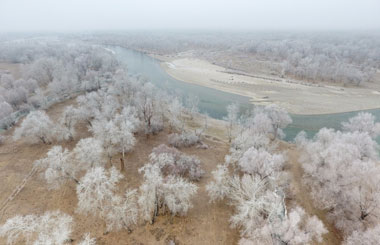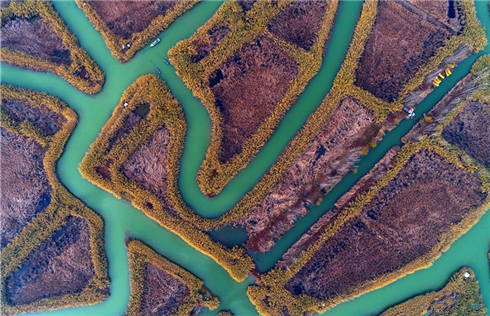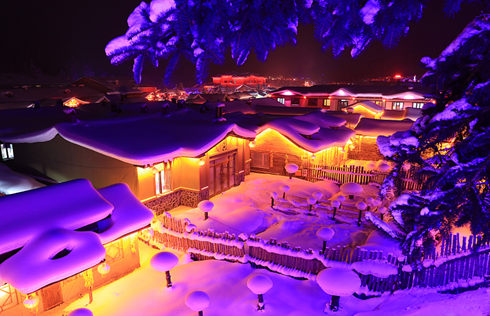Hidden treasure of rich culture, picturesque landscapes
Its green hills are a perfect place for a spiritual retreat as they integrate natural scenery, ancient architecture and folk customs.
These days, there are 48 temples of different architectural styles around the mountain region. Additionally, Wutai Mountain is home to some of the oldest existent wooden buildings in China that have survived since the Tang Dynasty (AD 618-907), such as the Nanchan and Foguang temples.
Lama temples also decorate the sides of the mountains with their traditional green and yellow architecture.
At the peaceful sacred sites, it is common to see monks chanting mantras and Buddhist devotees burning incense sticks and rolling prayer wheels as they ask for the good health and well-being of their relatives.
In the evenings, travelers can renew their energy with local food delicacies that include rabbit meat served with paprika and wild mushrooms grown on the sides of the mountain. One can also imitate the locals by drinking a small bowl of aged vinegar before the meal.
At our next destination, we needed to look up again to appreciate the beauty of the Xuankong temple, also known as the Hanging Monastery. Although I had seen pictures of it before my visit, I was still impressed to see up close that the wooden temple defies gravity by literally hanging in the air on the side of Hengshan Mountain.
The Hanging Monastery, located only 80 kilometers from Shanxi's second-largest city of Datong, is suspended 75 meters above the ground as if part of a magic trick.
In 2010, the architectural wonder won the dubious honor of being listed by Time Magazine as one of the "10 Most Precarious Buildings" in the world.
While climbing the narrow stairs that take travelers up to the temple, all I could think of was my mother's fear of heights and how much courage it would take someone like her to get to the top. But in the end, curiosity and a sense of adventure overcame my natural fear.














